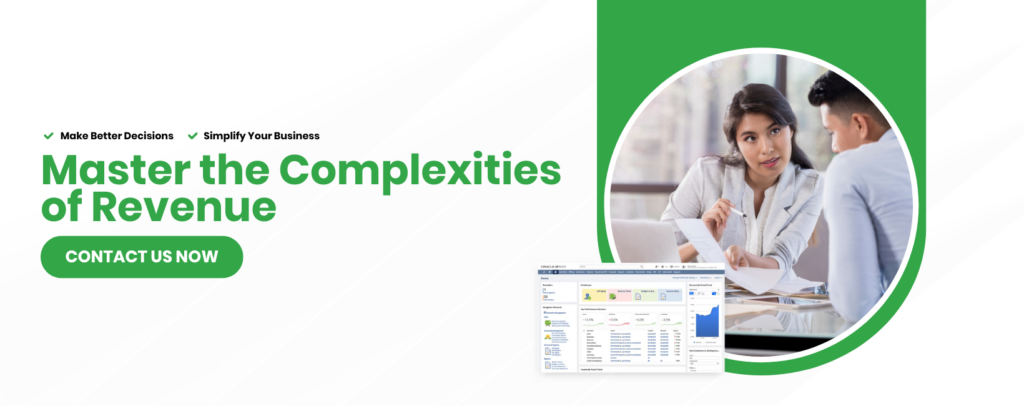Revenue recognition has been a controversial topic in the accounting world, and with little wonder: revenue is one of the most important measures used to assess a company’s performance and prospects. And staying on top of the complexities of revenue recognition presents a major challenge. Can it be simplified?
Simple spreadsheets might be sufficient to track sales for one or two customers, but what happens as you grow? New sales are constantly coming in. They have different dollar amounts and different rules. Some will be one hundred percent recognized this month while others won’t be recognized until later. You’re growing your company, but the more sales, products, and customers you add, the more complicated your tracking becomes.
If you don’t have an integrated revenue recognition application to support your growth, that means someone is manually entering data into a spreadsheet and then manually entering it again to send an invoice. That’s a lot of dual entry requiring additional resources. Manual systems take a lot of time and effort to maintain, and not only is there greater potential for error, but a spreadsheet-based system is also difficult to audit and trace back to original invoices.
Stay Ahead With Automatic Updates on the Latest Revenue Recognition Rule Changes
No need to manually update your complex web of spreadsheets!
In addition, there is limited reporting functionality with a spreadsheet-based system. You are very limited in how you can view and analyze information critical to decision making. But what if you had a system that completely automated your revenue recognition process? One that integrated with any existing ERP applications you’re already using and provided complete support for all key revenue recognition functions? Integrating your revenue recognition functionality means your finance team can put their focus where it needs to be – growing profitability.
Here are just a few examples of what automating revenue recognition can do for your organization:
- Efficiently meet revenue recognition standards
- Comply with AICPA, FASB and SEC regulations
- Improve finance productivity and reduce the cost and time of calculating, recording and reporting on revenue recognition
- Reduce or even eliminate the use of spreadsheets, dramatically reduce errors and gain strong, compliant processes
- Improve accuracy by ensuring the proper review, approval, and execution of revenue to be recognized
- Gain clear visibility and monitoring throughout the recognition process, from summary to detail to Estimated Selling Prices (ESPs) and key variances
- Because you’ll be operating in the cloud, you’ll stay ahead with automatic updates on the latest revenue recognition rule changes. No need to manually update your complex web of spreadsheets.
And those are just the basics. Automation and integration can also provide the functionality to get higher-level forecasts and projections based on work you’ve contracted for but have not yet completed. Designate any time span -- whether it’s the next year or the next five years – and view projections at the touch of a button on your dashboard.
From compliance to improved productivity to forecasting to improved accuracy, automating the system can improve your bottom line.

If you found the above content interesting, be sure to watch our video on:
This video is your gateway to actionable insights that can reshape your business approach. Ready to empower your profitability and elevate your item management strategies? Hit that play button and immerse yourself in a wealth of knowledge that can drive meaningful growth. Don't forget to subscribe for more enlightening content that equips you with the tools to thrive in today's data-driven business landscape.

)





